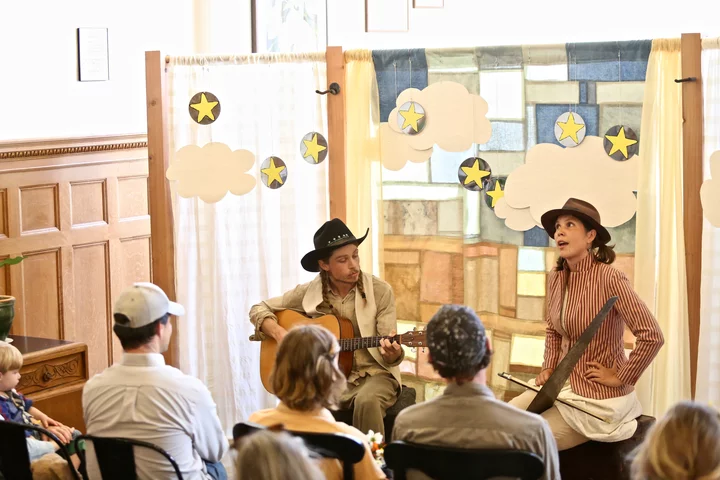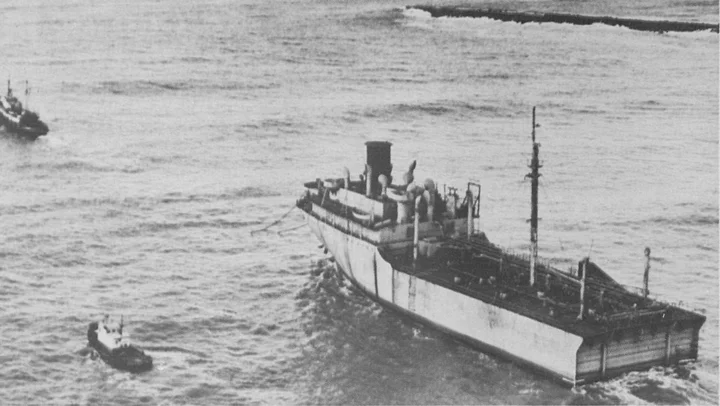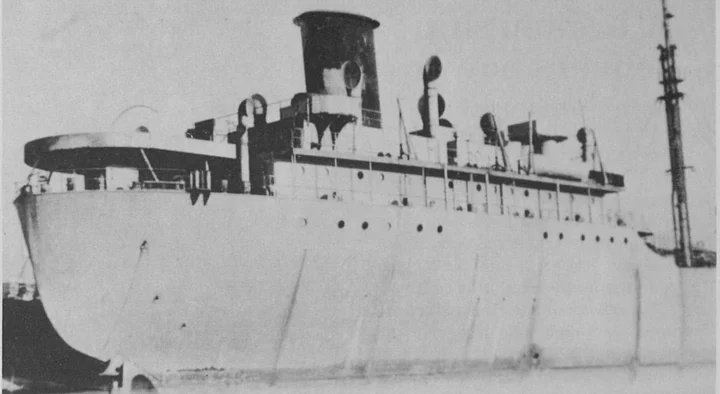GROWING OLD UNGRACEFULLY: Death With Dignity
Barry Evans / Sunday, April 7, 2024 @ 7 a.m. / Growing Old Ungracefully
“Why is euthanasia almost always considered the appropriate end point for our animal companions, but not for our human loved ones?”
— Jessica
Pierce in Psychology Today
###

Neil Gaiman’s “Death of the Endless,” drawn by Chris Bachalo in Death: The Time of Your Life #1, DC Comics. (Lo-res version qualifies as fair use under United States copyright law.)
The March issue of our local Senior News (published by the Humboldt Senior Resource Center) was dedicated to what the editor called “a difficult topic” which “may sound grim.” I was heartened that he took on this topic, one of universal relevance, although I’ve never been comfortable with the idea of death being difficult or grim, as in The Grim Reaper. Neil Gaiman’s “Death” character in his Sandman series — a kind, ankh-wearing goth girl — is more to my taste. In fact, the wealth of contributions in that issue of Senior News belie pessimism around the topic, many of which I found inspiring and compassionate.
I guess, at least at this point in my life, I’m in Kant’s kamp, so to speak: “The meaning of life is that it ends,” he wrote. Not just the meaning, either. Isn’t the certainty of death the whole justification for getting up in the morning and doing anything—writing a weekly rant, for instance? The only thing worse than dying, imho, is not dying—an awful eternity, day after day, century after century, whether on Earth or in some monotonous Barbieland, aka Heaven. Shudder.
How’s it going up there?” The Assumption of the Virgin with three hierarchies and nine orders of angels by Francesco Botticini, painted around 1475. (Public domain)
(Practically speaking, we are virtually immortal, in a sense. Our “germ plasm,” as the late biologist George Wald called it, represents an unbroken line stretching over three billion years, all the way back to the first primitive organism to appear on our planet. The other part of us, what Wald called the “soma,” is merely the vehicle for the germ plasm to get from one generation to the next. He writes, “Death is the casting aside of the body, of the soma, after it has done its work. That work is to carry the germ plasm, to feed it, to protect it, to warm it in a warmblooded organism, and finally to mingle it with the germ plasm of the opposite sex. With that, it has completed its function and can be discarded.”)
Philosophy aside, in my dotage I follow legislation relating to MAID, Medical Assistance in Dying, which currently, in California and a handful of other states, glosses over the problem of dementia. As the law now stands, MAID permits assisted death if two physicians confirm that death is likely to occur within six months, and that, absent intervention, the period between now and then is likely to be painful — not just for the dying person, but for their caregivers.
However, dementia, including Alzheimer’s, is rarely fatal in the short term (i.e. six months), typically taking years from onset of the disease to death. I dread the possibility that I might live a life in which I’m no longer conscious, behaving in ways that I wouldn’t want my wife Louisa, my family or friends to deal with. I believe that if someone with dementia meets the criteria for MAID — mental capacity for informed consent, intolerable suffering, and a foreseeable death, even if not within six months — they should be eligible.
Louisa and I already have advance directives, but we wish we could add that if, for instance, we became verbally or physically abusive, required physical restraint/locked door facility, or couldn’t feed ourselves — we’d want MAID. Unfortunately that’s not an option under California law, nor in any of the other nine states with MAID laws. We would like to see the legislation liberalized so that dementia, as defined under clear guidelines, would be a permissible reason for allowing a medically assisted death with dignity.
BOOKED
Today: 3 felonies, 11 misdemeanors, 0 infractions
JUDGED
Humboldt County Superior Court Calendar: Today
CHP REPORTS
Us199 / Sr197 (HM office): Assist CT with Maintenance
700 Mm299 E Hum R7.00 (HM office): Assist with Construction
5500 Mm101 N Men 55.00 (HM office): Assist with Construction
ELSEWHERE
Governor’s Office: Governor Newsom statement on the passing of Wallis Annenberg
RHBB: CalMatters: Newsom ramps up California redistricting threat as Texas weighs new Republican maps
RHBB: Barnwell Continues 2025 Perfect Streak
RHBB: Wildfire near Covelo could burn hundreds of acres, evacuations underway
Humboldt Bay Firefighters Extinguish Eureka House Fire; Damages Estimated at $75,000
LoCO Staff / Saturday, April 6, 2024 @ 3:22 p.m. / Fire
###
Press release from Humboldt Bay Fire:
On 4/05/2024 at 19:25 hrs. Humboldt Bay Fire responded to a reported Structure Fire at 1404 14th St. in Eureka. Humboldt Bay Fire responded with 1 Chief Officer, 3 Engines and 1 Truck for a total of 13 fire service personnel. Additionally, 2 volunteer Fire Support personnel responded and provided traffic control.
The first Engine arrived on scene in 4 minutes and reported a working fire in a residential structure and began to attack the fire. Due to the size of the fire in the residence another Humboldt Bay Fire Engine was requested to respond bringing an additional 3 fire service personnel to the scene. The second arriving unit was assigned to search the interior of the residence for any potential victims and the third arriving unit was assigned to vertically ventilate the smoke and fire from the residence. The fourth arriving unit was assigned to assist the first arriving unit with extinguishing the fire. The fire was controlled in 25 minutes and all occupants had escaped the residence prior to the arrival the first fire Engine.
Humboldt Bay Fire remained on scene for an additional 2 hours to completely extinguish the fire and conduct a cause and origin investigation of the fire. The cause of the fire is still under investigation and PG&E arrived on scene and disconnected the electrical and gas service to the residence. There were no civilian or Firefighter injuries and the value of the property is estimated at $450,000 and damage from the fire is estimated at $75,000.
Smoke Alarms Save Lives. Humboldt Bay Fire would like to thank City Ambulance, PG&E, Samoa-Peninsula Fire and Arcata Fire for their assistance on scene and providing coverage to other emergency calls during this incident.
Humboldt Bay Fire would like to remind everyone to immediately call 911 and get outside in the event of a fire in your home and to please have a designated meeting place outside your home in case of a fire so all occupants of the home can be accounted for by arriving fire service personnel.
THE ECONEWS REPORT: Coping with Climate Anxiety
LoCO Staff / Saturday, April 6, 2024 @ 10 a.m. / Environment
Image: Stable Diffusion.
“One of the penalties of an ecological education is that one lives
alone in a world of wounds.”
— Aldo Leopold
Do you also have a gnawing, seemingly ever-present hum in the back of your head — an intrusive thought about the immensity of the climate crisis and your own minuscule ability to do anything about it? If so, you are not alone. Some 83% of the United States thinks that climate change poses a “serious and imminent threat to the planet” and “59% of youth and young adults said they were very or extremely worried about climate change.”
Doomerism is not the only option. Would you like to reduce your own eco-anxiety? This show is for you. Join Chelsea Pulliam, EcoSomatic Coach at Somatic Earth, for a discussion about how you can cultivate resilience.
Want to hear more? Check our interview with Sarah Jaquette Ray, author of A Field Guide to Climate Anxiety.
CULTURE PLAYER: The Cowtown Serenaders Prepare to Hit the Road With a New Show About Community in Times of Natural Disaster
Gabrielle Gopinath / Saturday, April 6, 2024 @ 7:45 a.m. / Culture
The Cowtown Serenaders perform at the 2019 Fringe Festival in Eureka. Photo credit: Andrew Goff.
“Tales from Cowtown,” a puppet theater project led by Tayloranne Finch and Daniel Nickerson, will soon be traveling to rural sites across Northern California, thanks to a California Upstate Creative Corps grant. Finch and Nickerson, multi-hyphenate veterans of the Humboldt music scene and partners in art and life, play music together as the Cowtown Serenaders; they also have a rock and roll band / jukebox project called the Blueberry Hill Boogie Band. Their new, all-ages multimedia performance with fellow puppeteers Rory Cullifer and Sara Kei debuts in Humboldt, Mendocino and Trinity counties this spring.
“Tales from Cowtown” presented a welcome opportunity for Finch and Nickerson to expand the fictional world of Cowtown, which they introduced in previous Serenaders performances. Cowtown’s puppet residents come together as a community to model resilience when they are challenged by natural disasters. They get to do some thinking about human beings’ relationship with the natural world along the way. Rural regions in Northern California have been shaken in recent years; kids in the “Tales from Cowtown” audience will have already experienced disruptions and evacuations due to earthquakes, wildfires and floods. The artists want their show to acknowledge the reality of an increasingly unstable environment, while at the same time demonstrating that climate crisis accentuates the need for rural communities to come together. When I sat down with them, our conversation touched on puppet theater’s radical potential and the manifold challenges of taking puppets on the road.
“So much about natural disasters is about relationships,” Nickerson observed. “I was in Ferndale recently talking to a couple of locals, who were both like, ‘Yeah, as soon as the earthquake happened, it didn’t matter who you voted for. Everybody’s checking in on each other to make sure they have water to drink.’ Ultimately, we all need water and food and access to safe and clean places. We come together, even if there are some differences.”
“We’ve been thinking about theater and how to use it, what it brings to rural audiences, what it has to say to folks who live out in the country,” Finch explained. “The performance is set in Cowtown, and we know some things about Cowtown,” Nickerson agreed. “Puppet theater is connected to talking about the Earth, because puppet theater is elemental and performative. There’s a great quote from (the poet) Gary Snyder: ‘Performance is art in motion, enactment, embodiment, which is exactly what nature herself is.’”
When they’re not playing music or creating puppet theater, Finch and Nickerson are likely to be doing “earth work” in the garden or the field. The duo live and farm off the grid in southern Humboldt, observing permaculture principles. This spring they have been rehearsing “Tales from Cowtown” at Outer Space Arcata, taking advantage of grid-powered electricity to work on scene painting in the weeks before Daylight Savings Time began.
The Cowtown Serenaders perform in 2017 in Celo, North Carolina, at the HoneyLa Clubhouse. Photo credit: Leaf.
Part of serving a rural population is adapting to different standards of resource availability. With upcoming tour dates scheduled for outdoor spaces, Finch and Nickerson are working to create a theater that’s electricity-independent. They travel with a collapsible marionette stage that breaks down into a trunk, which Nickerson built. “That’s been one of our guiding design elements,” he explained; “how do you engage or bring entertainment without needing to be in an electrified space? We like the idea of a puppet theater that pops out of the back of a truck, in the middle of a place where there’s no theater and no lights or electricity.” “Tales from Cowtown” is inspired by projects that take art and bring it to life in unconventional spaces. The Bread and Puppet Theater, based in Vermont, is an influence. “They started with performances that protested the Vietnam War,” Finch said, “advocating for puppet theater because of its radicality and its affordability. We realized that this was applicable to our setting out here in rural Humboldt, where people have limited media access. Not everybody has the internet, or a personal laptop. A film wouldn’t reach a lot of these audiences, in the places we’re visiting.”
Cowtown is a place where animals, plants and even inanimate objects may voice perspectives on current events. “A lot of our characters are animals and plants,” Nickerson said. “It’s about listening to non-human voices; river-speak and earth-speak and plant-speak. Puppetry lends itself to that.” Finch continued the thought. “What’s fun and sort of radical about puppet theater is, it’s about relating to otherness. You take something that’s non animate, and then you animate it, and people can relate to it. And, like Sesame Street and Mr. Rogers taught us, a little sock puppet thing can create deep and profound feelings and relationships. Sock puppets can speak truths that would maybe feel a bit absurd for two humans to try and say to each other.”
Engaging with puppets “puts you in a certain head space,” Nickerson agreed. “Puppets have this way of bringing out the child. You have to imagine, to believe in a puppet. So then, you have to imagine that other worlds are possible.”
Puppet theater may even be able to encourage rural audience members to reach out across the political divide, the performers reckon. Nickerson pointed out that, while California is perceived as a liberal state, he and Finch hail from parts that are decidedly not. “People perceive Humboldt and Mendocino as liberal, hippie counties, which is not necessarily the case. If you are outside of city centers, there’s a lot of rural conservatism. We’re living on the divide between those two worlds. And we’re peacekeepers by nature, you know? Some people wanna fight the fights that wanna be fought, and we don’t; we want to find ways for the people who are fighting to come together and chill out. Being humans together is hard, and there’s many things that happen that cause you to lose trust,” he concluded. “But ultimately, when you’re talking about disasters, you need each other. Telling stories about the imaginary world of Cowtown gives us the opportunity to ask, ‘what does it look like to live together and work together?’”
Both performers laughed about puppetry’s tendency to burgeon into a life-consuming, situational endeavor. When developing a previous Cowtown Serenaders show in 2019, they worked from a pre-existing script. This time around, Finch pointed out, they had been developing the puppets and the script at the same pace. “The character comes first, and then the script evolves to include it. You query the puppets: what’s going on? We ask our river puppet — how do you feel, river? What is your motivation? We’re trying to let the story synthesize. Not micromanaging the details, but letting it evolve in a natural way. It’s a delightful, maddening process,” she continued. “I value that, and I believe in it. And then sometimes I’m like, ‘Oh, this is a form of self-induced insanity!’”
Finch and Nickerson believe in a “radically inclusive” approach. “Taylor’s credo is: ‘How do I say yes to everybody’s creative idea for this show?’” Nickerson commented. “That’s a hallmark of Taylor’s aesthetic as an artist: the yes. It’s a generous way to work. And, you get to be surprised by things. We have some control, but not a lot. I bet some theater professionals like to create in very controlled environments. But if you ever hang out with farmers, you know they do not have control. Maybe some elements of control, not much. I don’t know if we’re attracted to earth work because of that. Creating theater is much like creating on the farm. When you’re maintaining a production farm, you’re maintaining a very eclectic to-do schedule. You’re working toward yes, moving in the path of least resistance by developing everything simultaneously, doing a lot of different things and including a lot of different resources. The Earth has its say on certain projects. You have to be able to adapt and say, ‘Okay, Earth, you can have that one.’”
“Puppet theater is definitely the art farm, in some way,” Finch agreed, laughing. “Seasonal, a lot of things happening at once. The art farm aesthetic: that’s a good summary of Cowtown working style.”
###
To learn more about “Tales from Cowtown” or donate to help support this project, go to this link.
Follow
on Facebook and Instagram @thecowtownserenaders
Check
out Cowtown Boogie Records on Bandcamp.
###
“Tales from Cowtown” upcoming dates:
- Saturday, April 27 - Blue Lake Block Party
- Friday, May 10 - Covelo Farmers Market
- Saturday, May 11 - Willits - Recreation Grove Park
- Friday, May 17 - Willow Creek - Tish Tang Park
- Saturday, May 18 - Weaverville - Lee Fong Park
- Sunday, May 19 - Hyampom Community Hall
- Saturday, May 25 - Redway - KMUD Block Party
- Friday, June 21 - Middletown Farmers Market
- Saturday, June 22 - Lakeport Waterfront Park
HUMBOLDT HISTORY: The Wrecked Russian Tanker Ship That Powered Eureka for a Decade
R. Chalmers Crichton / Saturday, April 6, 2024 @ 7:30 a.m. / History
The half-a-ship, “Donbass III,” being towed stern first, heads out of Humboldt Bay on its last voyage. The destination was Los Angeles Harbor and the scrap pile. Photos for this article from the Martin and Rynecki Collection, via the Humboldt Historian.
On a quiet January day in 1959, the Donbass III crossed the entrance of Humboldt Bay outbound. There were a few interested people watching as two tugs guided the vessel, one towing and the other running alongside. When they reached the open sea, the second tug would return the bar pilot to Eureka. Looking closer, observers noticed the ship was proceeding under tow, but backing. Why, and for what distance?
Watching with keen interest, in addition to the Coast Guard, were several persons on one of the jetties. An observer might have seen among them Tom Jenkins, Division Manager for Pacific Gas & Electric Company. And high on Humboldt Hill, where he could command a view of the entrance and a broad expanse of the Pacific to the south, stood George J. Rynecki.
Before learning why there appeared to be an air of excitement about Ryneki and others, we should note a few details of the ship that was starting on its final voyage. Construction of the ship was done in the Swan Island shipyard, Portland, Oregon, in late 1944. She was designed as a tanker of the T2-SE-A1 type, one of many that the USA had built for the war effort. At her christening, she was named the Beacon Rock, a turboelectric ship with a name that was to be hers for only one year.
The War Shipping Administration was acting as owners and operators of our Merchant Marine fleet and under terms of the Lend-Lease program the Beacon Rock was turned over to Russia. They changed her name to Donbass III. (This was the third ship the Russians named honoring the coal basin of the River Don.) The Russians put her to work importing U.S. war material from West Coast ports.
It was in February, 1946, that the Donbass, bound for Vladivostok, encountered a violent storm. The Russian seamen know these waters well and how wild the icy seas can be but there seemed to be more than the elements stacked against them on this fateful day. The decks were loaded with planes and tanks and the cargo holds bulged with aviation gasoline and fuel oil. They had reached a point off the northern chain of the Aleutians, where seas were running high and it was a bitter, cold, foggy day. Experienced sailors agreed they had never encountered such a vicious clash of the elements. Each hour brought an increase in the storm’s tempo.
(Murl Harpham, writing for Humboldt readers, in a local newspaper, described the way the ocean hurled the Donbass’ 10,000 tons of deadweight around that day,…”like a redwood chip in the maelstrom of Ishi Pishi Falls.”)
There was no mercy given the ship. She was being brutally tossed in all directions — a ship nearly the length of two football fields! Her boilers were still generating steam but the question was, how much longer could she continue taking such punishment in such a mean storm.
The sequence of events of the next few hours is unclear. However, when the battering ended and the sea subsided 48 hours later, there was only one half of the ship afloat. The 280-foot-bow section, cargo. Captain and over a dozen crew members had been claimed by the sea.
Several theories were postulated regarding the cause of the disaster. There were suggestions that varied from an explosion of a floating mine to a rupture of the ship’s seams due to the twisting of the vessel during the storm. We know the condition of the seas she had gone through and of the possibility that she may have been overloaded. It is acknowledged this was not the first ship to suffer a like casualty.
The late Humboldt County historian, Andrew Genzoli, gleaned the following for his column, RFD: “Days later (following the storm) crewmen of another U.S. tanker, the Puente Hills, sighted the floating stern section and took it in tow. For 21 days they battled stormy seas to bring their prize to port. Their claim of salvage was upheld. The Shipping War Administration, owner of both ships, paid $110,000 to buy back what was left of the Donbass III” (About fifty persons were rescued from the broken ship.)
At the close of W.W. II, population growth was particularly noticeable on the West Coast. Power companies were hard-pressed for additional power to meet the demand for the industrial boom and Humboldt County was no exception. There were thirty or more industries needing electric power near Humboldt Bay and several hundred throughout the county. One possibility explored involved bringing to Eureka a gigantic “Mountain-type” locomotive to power a generator for additional electrical energy. But this proved out of the question because the Fort Seward tunnel was too small for the locomotive.
Eureka had an immediate need for additional emergency power. Winter gales had been causing frequent interruptions of service. During those years there was only one line over the mountains from the Cottonwood Substation. News of a half ship that had been towed into Seattle, Washington, suggested a solution to the problem. A bid of $125,000 was submitted by P.G. & E. at a Maritime Commission sale. Immediately upon notification of their successful bid, arrangements were made to get the ship to Eureka.
It certainly seemed the ill-fated ship had an affinity for storms. Two tugs started out from Seattle with her. They were only as far south as Umatilla light when they were hit by a windstorm that threw their towing apparatus into what first appeared to be an impossible situation. The tugs were successful, however, in getting their tow into the harbor at Port Angeles where repairs were made. Following improvement in the weather and a change in luck, they were able to reach Humboldt Bay on November 3, 1946. Six days later the ship was nestled into her position at the foot of Washington Street. Within a few weeks she was ready for steam-up and for her huge generator to feed power into the P.G.&E. system, a job it performed for the next ten years.
A close view of the stern section of “Donbass III,” the area housing the generating machinery used by PG & E while the vessel was in Eureka.
Before getting into operation, a number of things needed to be accomplished. The ship had to be secured so storms would not disturb any connections of the heavy duty conductors that were brought up through the ventilator, over the side and then tied into the system. PG&E Life, a magazine for men and women of that power company, reported that:
… the cargo tanks were filled with oil to supply the nearby Eureka Station B and the Donbass III herself. The added weight grounded the ship in the mud, an ignoble end to a once proud vessel. But her usefulness to P.G. & E. was just commencing.
The engine room was given a thorough overhaul, both boilers and her immense generator. Normal full load was 4,800 kw, which could be raised to 5,500 kw during periods of emergency. Over the years many workers served faithfully in that engine room. A few of those employees of P.G. & E. known to the author were: Howard Taylor, Red McCormick, Jim McMillen, Barney Koli and Ed Weeks, who went from there to eventually head up the electrical engineering at Humboldt Bay power plant. (It is reported that some of the men, leaving the engine room to go topside on a cloudy, moonlit night, experienced the feeling of actually being at sea. The same feelings were felt on a stormy night when they climbed up from the engine room to go ashore.)
After ten years, the advent of more and better electrical facilities in the Humboldt area made the Donbass again ‘war surplus.’ Before the ship was sold, the main generator was rebuilt and shipped by P.G. & E. to Vallecitos. There in the land-locked hills of Livermore, it turned out the first privately financed atomic electric power in the nation. Thus, the least of all P.G. & E.’s steam units became the bellweather of a new era in power production.
Marine historian Wallace Martin has an advertisement in his file that appeared in “The Marine Digest” early in 1957 in which it states that Captain H.A. Jeans & Associates, Marine surveyors of San Pedro, were offering the ship for sale. But ships and portions of ships were plentiful, so the Donbass III was to sit many months until the company decided to offer the ship as scrap. Contacts were made with several firms on the Pacific coast, suggesting they might consider entering a bid. One of these was George Rynecki of the local firm of G. & R. Metals.
When George Rynecki learned of the ship auction, he debated about making a bid. He concluded that this would be a project of such magnitude it would be best to contact a specialist in scrapping ships. Perhaps after consultation, a partnership could be arranged. In our interview with Rynecki, he explained there were several firms that made a specialty of dismantling ships for scrap, so he searched them out.
An agreement was reached with the National Metal Company of San Pedro to join in the purchase of the tanker Donbass III. In their agreement, the responsibilities for Rynecki were to enter the bid, refloat the ship, make it seaworthy, make any minor salvage at Eureka that seemed wise and expedite the towing arrangements for transport of the ship to San Pedro, where the major salvage would take place.
Simple and straightforward as the foregoing sounds, it was one problem after another that had to be resolved. Power had been disconnected, so G. & R. Metals hooked up a diesel-powered generator that was tied into the ship’s own lighting system. Climbing up and down five or more decks to work was not practical, so a door and passageway was cut through the hull. Several tanks were loaded with seawater that would have to be pumped out to free the ship — later they were to find that an opening the size of a large door had been cut through a hull section below the waterline. They were unaware of this for some time, therefore pumping was futile and the opening had to be located and sealed.
Not every problem was discouraging. They found several diesel engines that they were able to start with remarkable ease and these could be used for generating power for such chores as lifting,, lights, welding and cutting. Arrangements were made to have P.G. & E. bring electricity to the ship, thereby allowing the G. & R. Metal crew to bring in several large pumps that Rynecki owned. These were used for pumping seawater back and forth, to aid in freeing the ship and later for the transfer of ballast in trimming the ship so that she would maintain an even keel for the impending sea voyage.
Rynecki expressed admiration for the job that his foreman, Louis Thomas, did in the preparation of the vessel for sea. Thomas was experienced in salvage and understood working with various metals and had a “take-charge” attitude.
As the ship was prepared for the trip, minor salvage was done, but Rynecki was pushing his men to reach a deadline. He learned that one of the highest tides of the year was to happen soon. Inasmuch as the ship had not been free of the bottom for many years, help from the elements was welcome. The best tides were around year end. They missed the first one, but were ready for number two. Work went along at an eager pace. The plan was to tow the ship from her comfortable berth to a neighboring dock. Rynecki had arranged with Coggshell Company to have two of their boats on hand at the appointed time.
The moment of truth arrived. The tugs were on the scene and a small line was thrown to the ship so that Louie Thomas, who was waiting on the deck, could pull the towing cable and make it fast to the ship. On shore, a D-8 Caterpillar tractor was hooked up ready to pull its winchline simultaneously with the tugs when the signal was given. There were still unanswered questions: When it got loose from the bottom, how would it ride? Would it be heavy on bow or stern? How high in the water would she be?, etc.
Rynecki surveyed the preparations and gave the prearranged signal for taking up slack and to standby. Was it imagination? The ship seemed to be ready to move! This was the moment, pull! The tugs dug in and the “cat” roared. With hardly a shudder, the ship was free and riding remarkably well. A real cheer was given by workmen as the ship moved into the bay on the 31st day of December 1959.
New Year’s morning Rynecki drove to the dock to see how the Donbass III had weathered the night. From a distance she looked in good shape but on closer examination Rynecki was horrified. The ship was riding with a list. Was this something that might get worse? Would it be a gamble to assume there would be no change in the status quo for another twenty-four hours? The wise move seemed to be to locate Foreman Louis and ask him to spend a few hours of his holiday trying to trim the ship. Things worked out well that day, but it turned out to be a pattern that had to be followed each day, even though there was steady improvement in the attitude of the ship. Advice from one who was seasoned in such things was to load ballast, thereby lowering the freeboard to improve her ride. This suggestion proved to be sound, but it took time with the equipment that was available. Finally the call was given for the sea-going tug to come to Eureka.
A very powerful tug with an experienced crew arrived to move the ship to Terminal Island, Los Angeles Harbor. The transit was accomplished with no problem. There the massive boilers, her shaft and other large machinery were salvaged before the complete dismantling took place.
George Rynecki said, “That part was not my worry, I had to get her safely out in the ocean. What a relief that was to see her cross the bar so smoothly!”
Since that day, there have been at least two occasions elsewhere in the world when a ship’s power plant has been used as emergency power for a seaside community. However, we are certain nothing can match the record of the Donbass III, while anchored at Humboldt Bay.
Before breaking in half, the Donbass III looked like this sister ship, the Allatoona, the world’s most numerous tanker type. A total of 481 were built by U.S. shipyards.
###
The story above was originally printed in the November-December 1986 issue of the Humboldt Historian, a journal of the Humboldt County Historical Society. It is reprinted here with permission. The Humboldt County Historical Society is a nonprofit organization devoted to archiving, preserving and sharing Humboldt County’s rich history. You can become a member and receive a year’s worth of new issues of The Humboldt Historian at this link.
Judge Rules Arcata Can’t Let Its Freak Earth Flag Fly Above Old Glory on City Pole
Ryan Burns / Friday, April 5, 2024 @ 12:13 p.m. / Courts , Local Government
Despite the will of a narrow majority of Arcata voters, the city can’t legally fly an Earth flag above the stars and bars stripes on its municipal flagpole.
This according to a ruling issued Tuesday by Humboldt County Superior Court Judge Timothy Canning.
Canning’s decision, first reported by the North Coast Journal, says that since both California government code and Military and Veterans Code employ the word “shall” in describing the U.S. flag’s designated position of supremacy, the City of Arcata’s hands are tied.
“The Court finds that the plain language of both statutes does not allow the City to exercise any discretion as to the placement of flags,” the ruling states, adding that federal Flag Code, in contrast, uses the discretionary term “should.”
As a general law city created by the state, Arcata must comply with such mandatory provisions of state law, even if voters say otherwise, according to Canning. The public certainly has the right to change or modify laws by initiative, referendum or proposition, he notes, but such reforms must be accomplished at a statewide level, not within individual cities.
Otherwise, he reasons, voters in general law cities could decide to exempt their jurisdictions from other statewide rules, like those in the Brown Open Meetings Act or the Public Records Act.
Proponents of Measure M, including former Arcata City Councilmember Dave Meserve, argued that its passage represents a lawful expression of Arcata citizens’ free speech rights, but Canning finds that the measure actually “compels speech by the City,” and government speech falls outside the purview of the First Amendment.
Meserve and his fellow backers of Measure M have argued that the initiative was meant to express a message of global unity and communal responsibility for the planet’s wellbeing, rather than signaling any disrespect to veterans or the nation.
Meserve told the Journal that he’s disappointed by the ruling and has asked the city council to keep the Earth flag flying atop the pole while he and his fellow Measure M backers consider whether or not to appeal.
###
PREVIOUSLY
- ‘Flying the Earth Flag at the Top is Only Logical’: Arcata City Council To Consider Earth Flag Initiative to Either Adopt or Submit to November Ballot
- The Final Results of the November 6 Election Are In, and The Results Are What You Now Expect Them to Be
- Humboldt Court Considers the Legality of Arcata’s Voter-Approved Initiative to Fly the Earth Flag Above the U.S. Flag
Federal Disaster Funding Won’t be Forthcoming for Victims of the January Floods, Office of Emergency Services Says
LoCO Staff / Friday, April 5, 2024 @ noon / Crime
PREVIOUSLY:
###
Press release from the Humboldt County Office Emergency Services:
The Humboldt County Sheriff’s Office of Emergency Services has been informed that the reported damages related to the January 2024 flooding events did not meet the high federal requirements for individual or financial assistance, which may have provided various funding opportunities for services like home repairs.
Individuals who experienced flood damage to their home or business are strongly encouraged to work with their insurance provider(s) to file a claim for repairs if they have delayed doing so.
Background
Federal disaster assistance is crucial to local communities like Humboldt County. When a natural disaster strikes and the damage exceeds the capabilities of the county or the state to respond, the state may ask the federal government to declare a disaster. A federal disaster declaration helps the impacted community qualify for federal aid programs, including funding from the U.S. Department of Homeland Security’s Federal Emergency Management Agency (FEMA). One critical disaster assistance program is FEMA’s Individual and Households Program (IHP), which provides financial and direct services to eligible individuals or households.
The threshold for a federal disaster declaration in California is approximately $74 million, or roughly 1,200 homes destroyed or with major damage. The state’s threshold is exceedingly high because of the high economic value of the Los Angeles and San Francisco Bay Area regions and of the state’s tech industry. As a result, small and/or rural communities throughout the state are unable to qualify for federal assistance and are deprived of an equitable opportunity for disaster recovery. Until regulatory changes are made in Washington DC, this critical assistance remains out of reach for rural communities like Humboldt County.
Additionally, certain criteria must also be met in order to qualify for low-interest federal disaster loans like loans provided by the U.S. Small Business Administration (SBA). To meet the one threshold to qualify for an SBA federal disaster assistance loan, at least 25 homes or 25 businesses, or a combination of at least 25 homes, businesses or other eligible properties, each must sustain uninsured losses of 40 percent or more of the estimated fair replacement value or pre-disaster fair market value of the damaged property, whichever is lower. Humboldt County’s reported damages related to the January 2024 floods did not qualify the county for federal loan assistance.
Be Prepared
The Office of Emergency Services encourages residents to work with an insurance provider to obtain homeowners or renters insurance if you do not have them. Insuring your home, business or property is the best way to make sure you will have the necessary financial resources to help you repair, rebuild or replace whatever is damaged in the event of a natural disaster.
If you have insurance is important to review your policy to make sure the amount and types of coverage you have meets the requirements for all possible hazards. Homeowners insurance does not typically cover all types of disasters, so you may need to purchase insurance from another provider. For more tips on how to prepare your finances for natural disasters, please visit ready.gov/financial-preparedness.
For more information or to find the latest updates from the Humboldt County Sheriff’s Office of Emergency Services, please go to humboldtsheriff.org/emergency and visit @HumCoOES on Facebook and Twitter.










